Islet of Heat
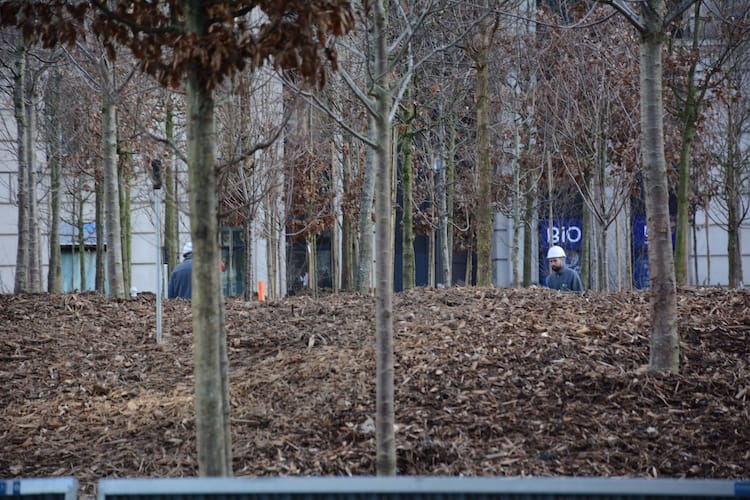
Friday, 26 January
The French love their grands projets, and there are quite a few of them in Paris at the moment as the city frenetically dolls herself up for the Olympic Games this summer and beyond.
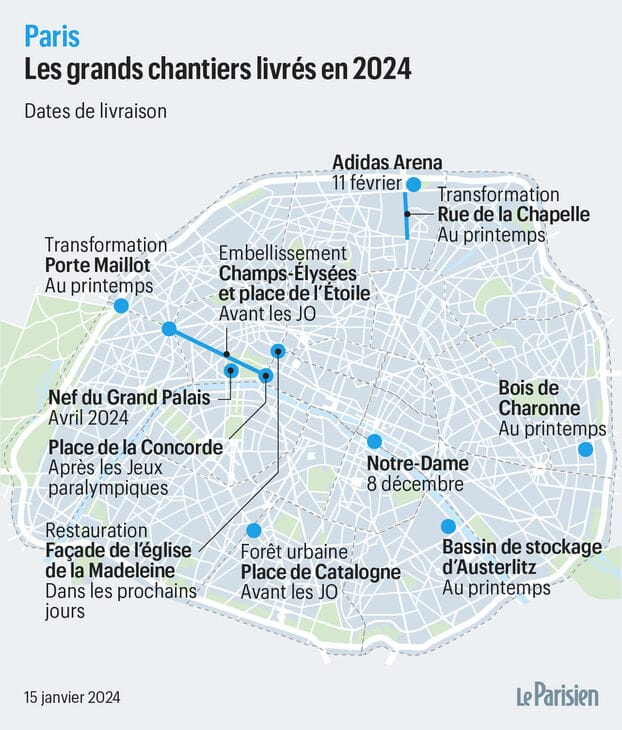
There is the ongoing reconstruction of Notre Dame after the devastating 2019 fire.
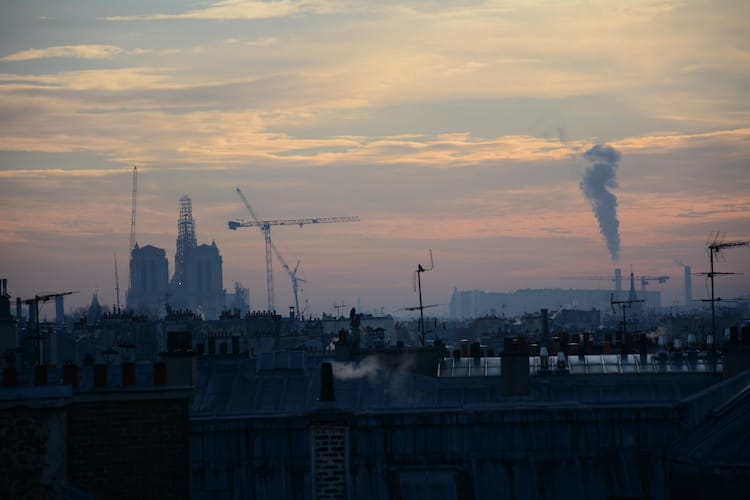
And work on the Madeleine Church, as well as the Grand Palais.
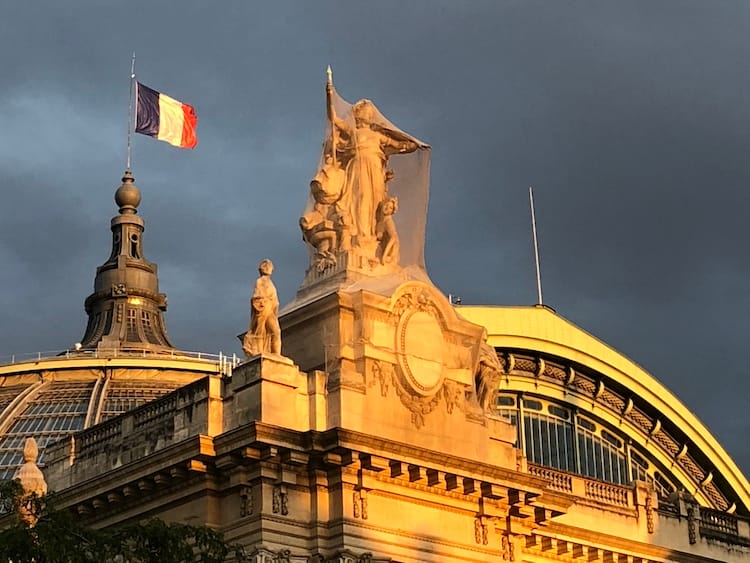
There is also a lot of revamping of public spaces. A large swathe of the place de la Concorde, for example, has been turned into a basketball court and BMX freestyle park.
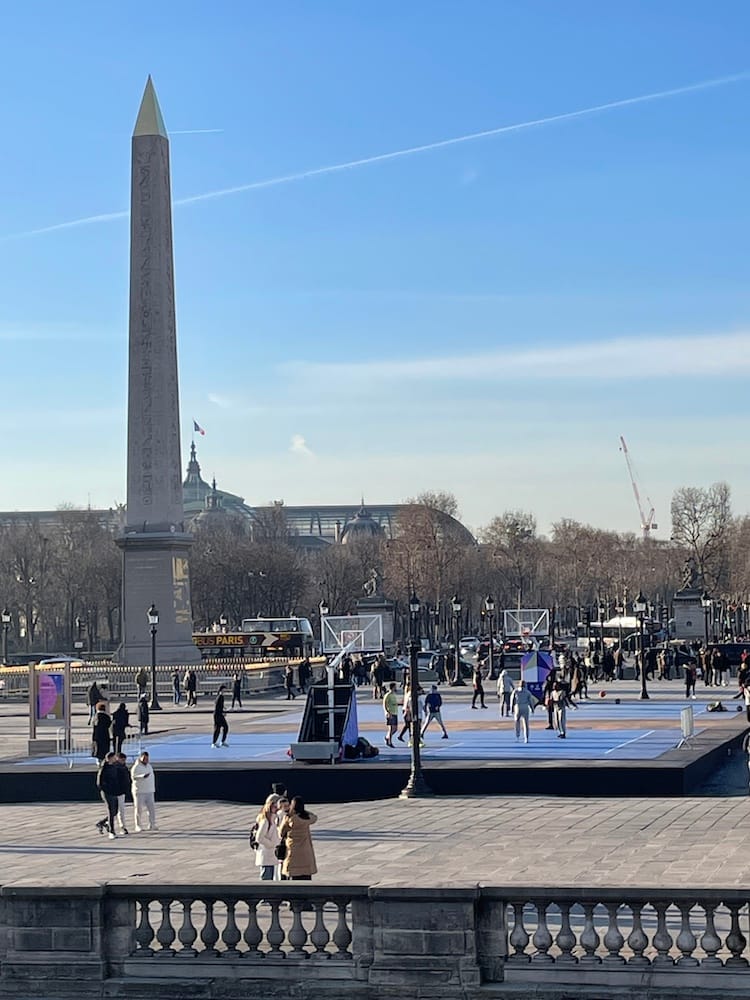
And some of the 170,000 trees promised by Mayor Anne Hidalgo at the beginning of her mandate are finally being planted. Since I have witnessed more trees coming down...
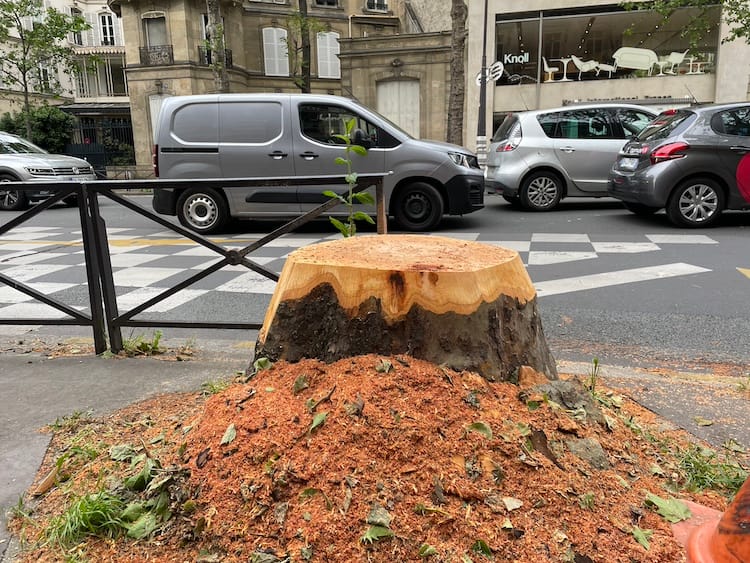
...than going up, the other day I went to see one of the new 'urban forests' in the making.
The place de Catalogne, a square behind the Montparnasse train station and tower, was created in the early 1980s and named after the Barcelona architect Ricardo Bofill who designed the outsized neo-Classical buildings on one side of it.
It is also, as a large sign informs the visitor, ‘un îlot de chaleur' (an islet of heat) thanks to the density of concrete and asphalt. Planting 4000 square metres/43,055 square feet with 470 trees and 16,000 perennials such as ferns and ivy is supposed to offset some of our man-made mess. But by how many degrees? This huddled mass of imported plant life will have to work very hard to make a difference.
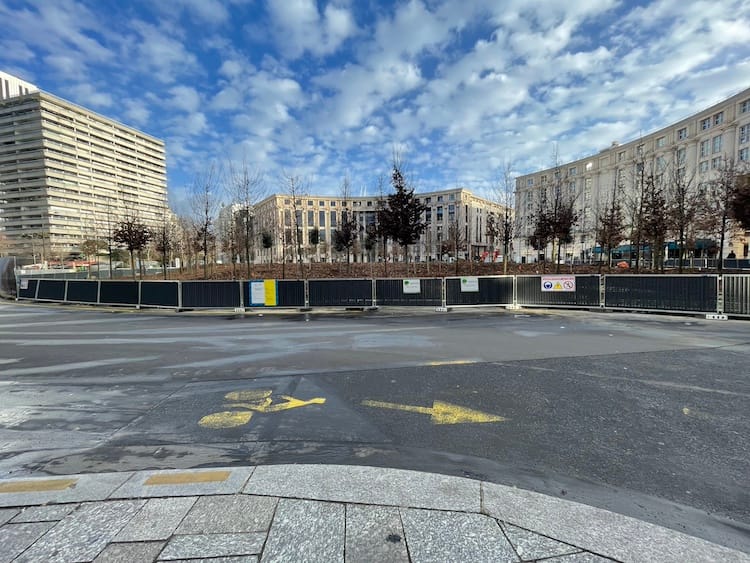
I remember visiting the square shortly after its construction. It shocked me then and shocked me again last week, made me wonder if I hadn't landed back in Berlin among the Soviet façades of the Karl-Marx Allee. Both front (above) and back...
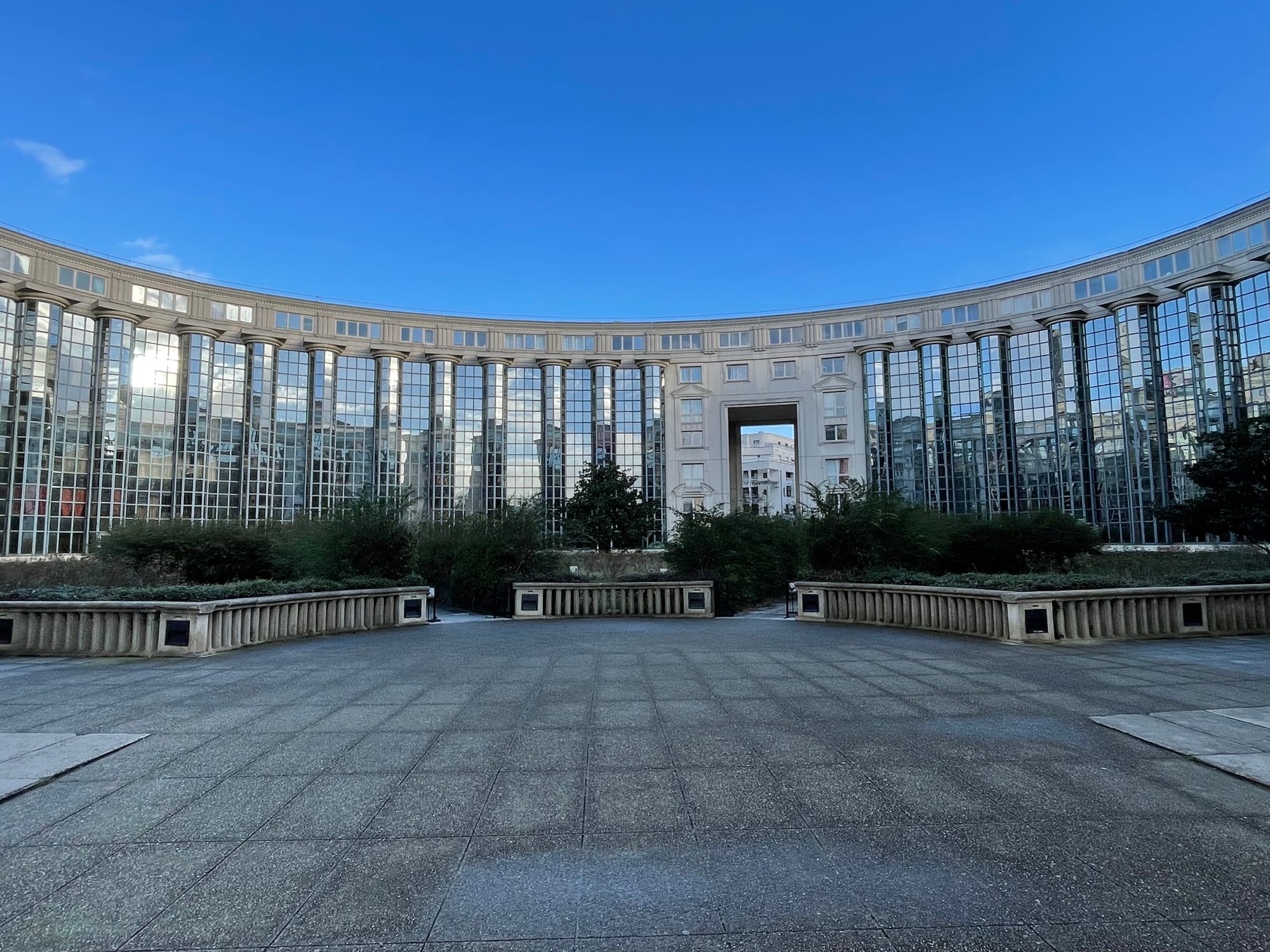
Warm and welcoming it is not, but of course neither is the Montparnasse tower that overshadows it, both literally and metaphorically.
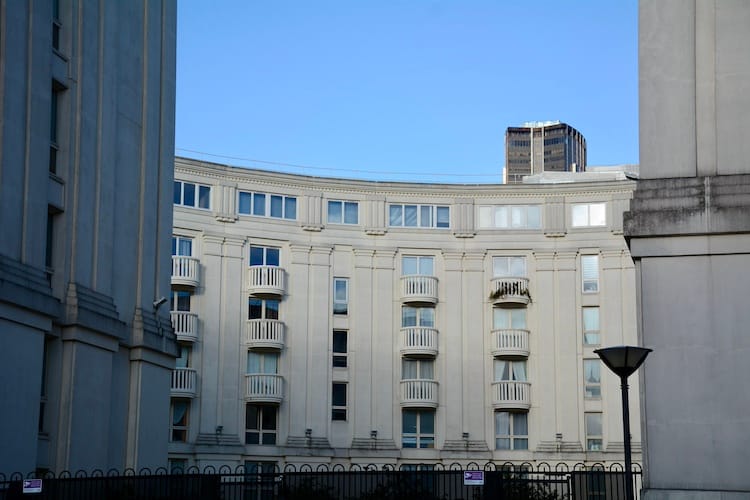
Plaisance, as the quartier is called, has always been an outlier, even before the train lines hemmed it in.
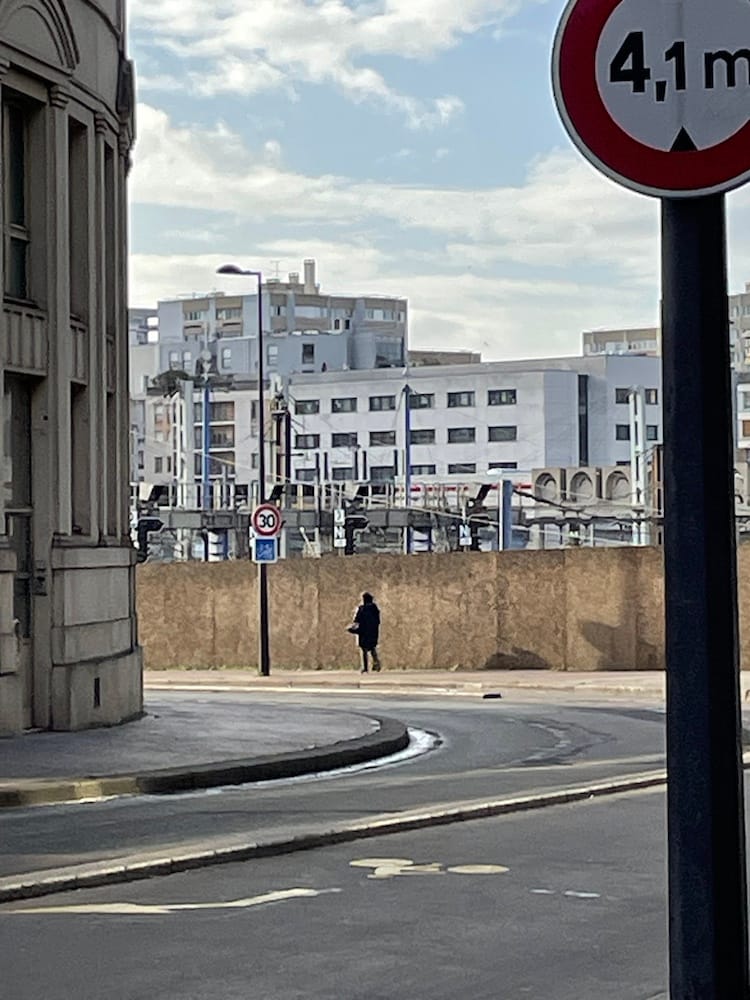
Named after a local farm, the area originally belonged to the Sainte Geneviève Abbey, the buildings of which were kilometres away (its tower still stands, part of the lycée Henri IV, next to the Panthéon).
Where not pockmarked by stone quarries, the land was used for farming and hunting, until things livened up at the beginning of the 19th century. The northern part, where the place de Catalagne stands today, sprouted guingettes (dance hall eateries), cabarets and restaurants because there was no tax on wine outside what was then beyond the city limits.
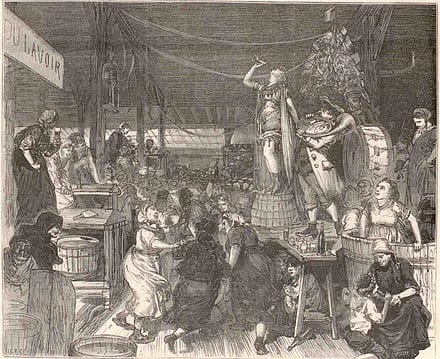
In 1860, Plaisance became part of Paris. Baron Haussmann snubbed it in his massive urban reconfiguration. André Chauvelot, however,…
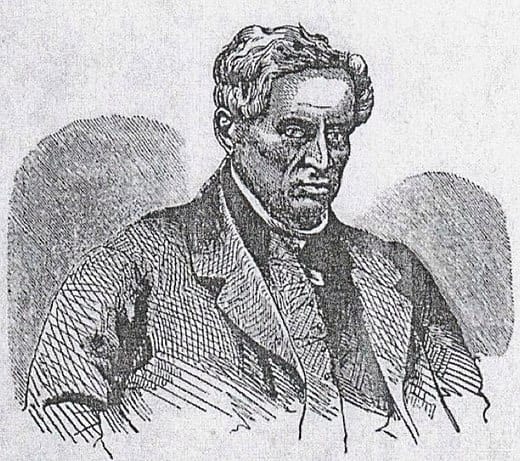
…made a fortune gobbling up and developing land there (to his credit, he also ran a soup kitchen and tried to develop community activities). But building was haphazard and of poor quality, the population impoverished. By the 1940s, the area behind Montparnasse was classified as 'un îlot insalubre' (an unhealthy islet)...
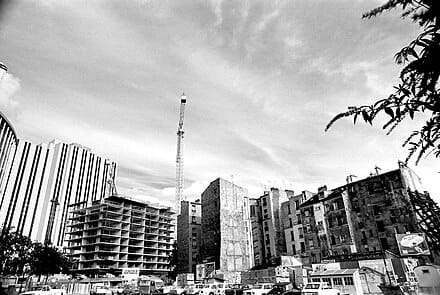
...and torn down in the 1970s to make way for the place Catalogne and other post-modern constructions.
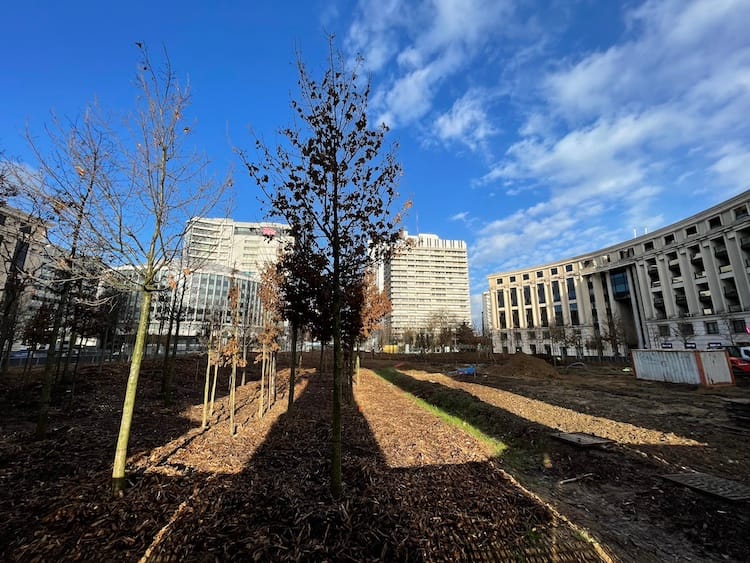
It felt eerie, almost echoing, the day I visited, as if the soul of the place had been bulldozed over and hauled away with the bricks and mortar of its previous life. The presence of the trees didn't help – in fact, I felt sorry for them, fenced in and surrounded by an inhospitable environment. Temperatures may soar in the summer, but I can't imagine much human heat being emitted from the buildings at any time of the year.
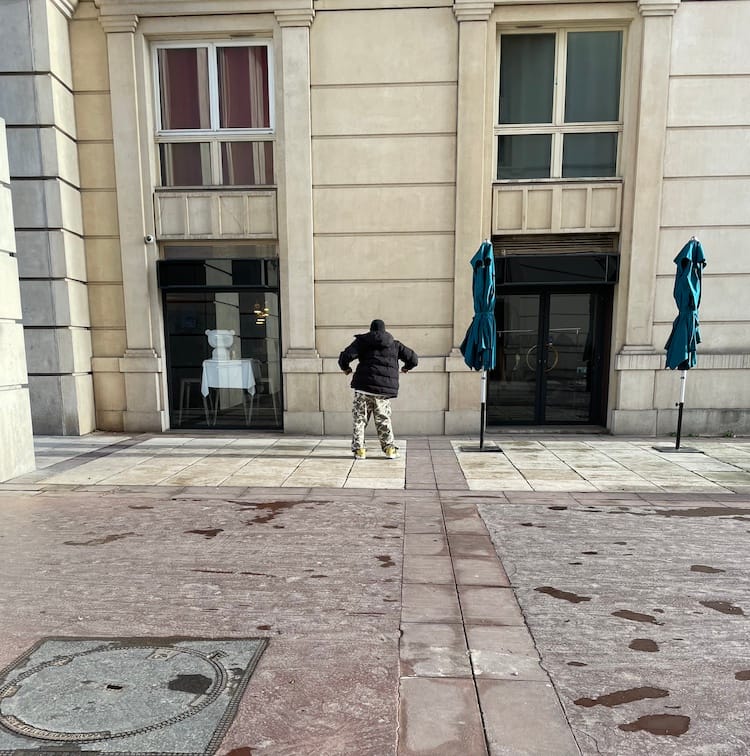
Behind this mournful scene stands a church. I gravitated towards it as a vestige spared the wrecking ball and because houses of worship often soothe and move me, even if I am not religious. But wow, I wasn't expecting, had never seen anything as spectacular as this:
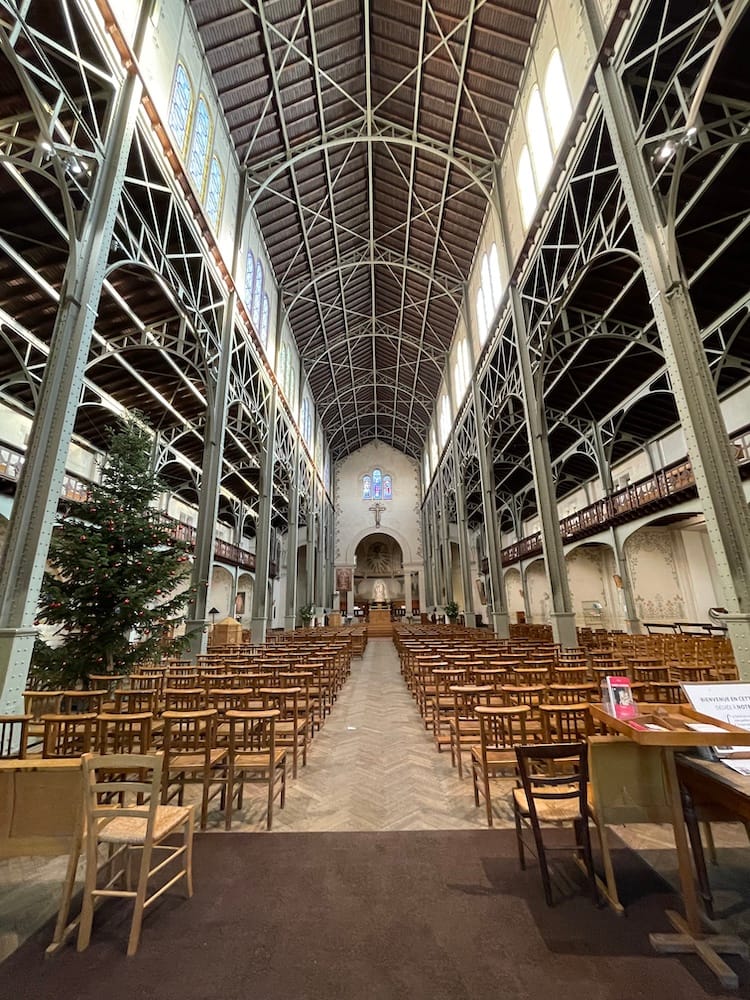
Instead of stone pillars and pointed vaults, there was a supporting structure that looked borrowed from the Montparnasse train station on the other side of the square. Notre Dame-du-Travail, I learned, was built between 1897-1902 for the many labourers living in the area and working on the 1900 World's Fair. The architect Jules-Godefroy Astruc was indeed inspired by a train station, the Gare d'Orsay, and the recently finished Eiffel Tower. He thought the workers would feel more at home in a building resembling their workplace, where the touch of the metal would feel familiar. Put another way, Astruc wanted to create an islet of (human) heat for its patrons.
It was the perfect counterpoint to the chill of the place de Catalogne. Here's wishing those trees well.
You can visit my website here and follow me on Instagram here